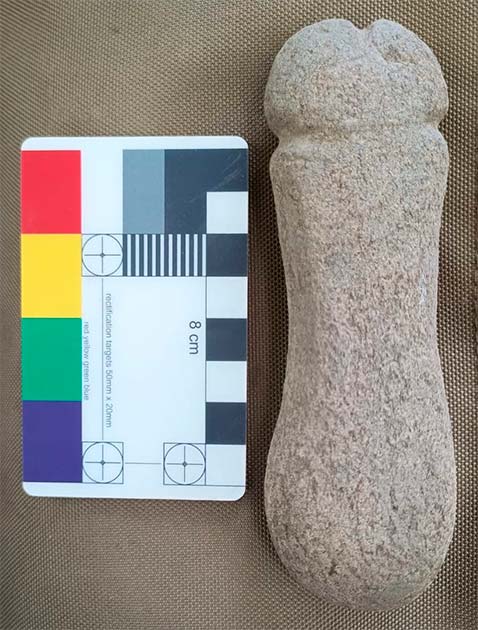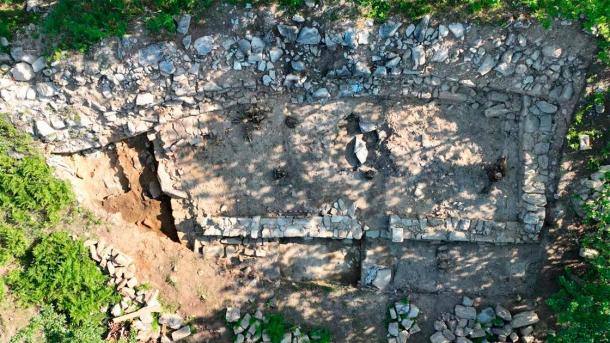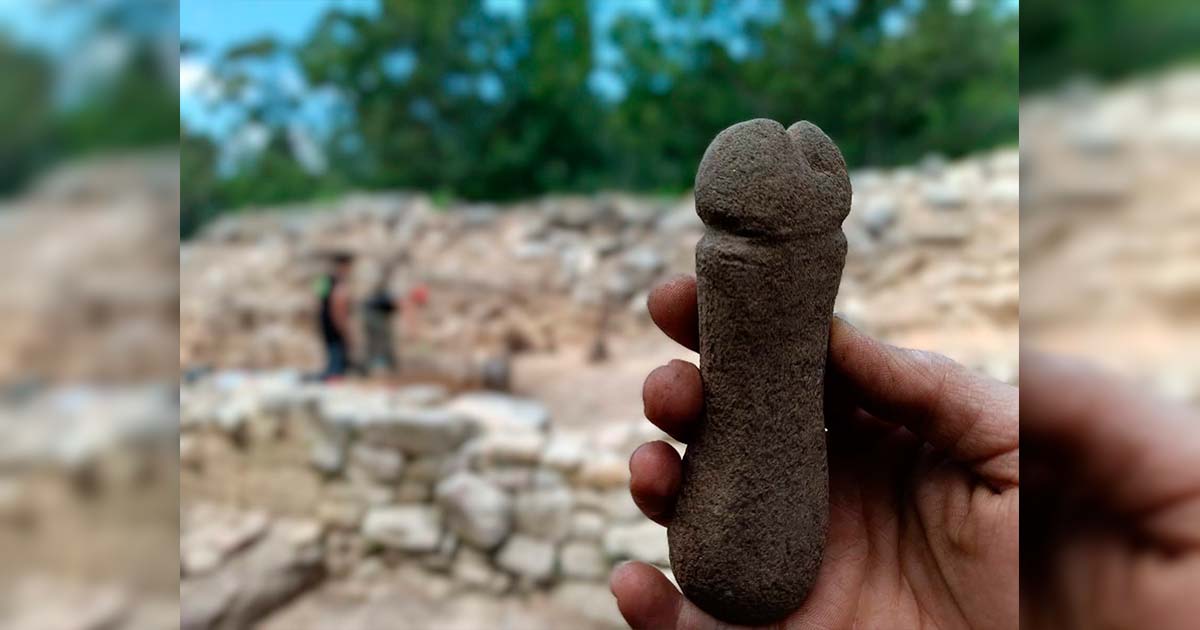Stone Penis Found in Ancient Ruins in Spain Had Violent Purpose
A bizarre artifact has been uncovered in ancient ruins in the northwestern region of Spain: a six-inch stone penis. The relic stands out, not just for its phallic form, but for its violent purpose – to sharpen weapons in preparation for bloody battles during the Irmandiño War in Spain.
The artifact was found amidst the debris near Torre de Meira, a 14th-15th century tower that fell victim to peasant uprisings against the nobility, resulting in its destruction in 1476 during the Irmandiño War in Spain. This conflict emerged as a result of the peasants and citizens rebelling against the oppressive feudal system, leading to the destruction of approximately 130 castles, towers, and fortresses, reports Art News .
According to Peña from the Árbore Arqueoloxía team, sharpening stones are commonly discovered at medieval sites, and can have different forms. The archaeologists determined the function of the stone penis by observing a distinct pattern of wear on one side of the phallic whetstone.

Archaeologists believe the medieval stone phallus was used to sharpen weapons. (Árbore Arqueoloxía S.Coop.Galega )
Function and Purpose: The Ria de Vigo Estuary Area
Although the cultural significance of the artifact remains uncertain, its proximity to the sacked tower offers a potential clue. Perhaps it held a symbolic meaning within the context of the war or served a practical purpose during that turbulent time.
“It materializes the symbolic association between violence, weapons, and masculinity,” archaeologist Darío Peña told Hyperallergic. “An association that we know existed in the Middle Ages and that is present in our culture today.”
The artifact was found near the Ría de Vigo estuary, which has a rich history of human settlement and has yielded numerous significant archaeological finds. Over the years, relics from the Neolithic, Bronze Age, and Iron Age have been discovered in the area. Remarkably, an Ancient Roman villa and a sea salt factory still stand as enduring testaments to the past.
Excavations at this site began around 3 years ago. In the first phase of excavations, the tower was excavated and restored by Arbore. Just last year, the focus was shifted to the structure’s surrounding wall, and finally the focus was shifted to excavation of the main building. Archaeologists plan to continue excavations at the site, after seeking permission from the landowners in the municipality of Moaña.

The Torre de Meira ruins. ( Árbore Arqueoloxía S.Coop.Galega )
Phallic Symbolism Through the Ages
While penis artifacts from the medieval European era are indeed rare, an array of phalluses, carved, painted, and etched, have been uncovered in recent times from ancient Roman sites. In a noteworthy discovery from February, historians identified an object that may have functioned as an ancient Roman dildo.
Some of these findings reveal that depictions of penises were employed as derogatory expressions (one instance featured accompanying words that insulted “Secundinus, the shitter”). However, the phallic symbol was also believed to possess the power to ward off evil spirits and bring good luck.
In Roman society, phallic symbols often took the form of amulets known as fascinum. These amulets were believed to possess protective qualities and were commonly worn or displayed in homes, shops, and even on military standards. The fascinum could also be depicted in frescoes, mosaics, and sculptures, serving as a reminder of its symbolic power.
Moreover, the Romans embraced phallic imagery in festivals and processions. One such celebration was the annual festival of Liberalia, dedicated to the god Liber, a deity associated with fertility and growth. During this festival, people paraded through the streets carrying phallic symbols and engaging in revelry and merriment.
In Celtic societies, phallic symbols also held significance, although their interpretation and usage differed from that of the Romans. The Celts revered the phallus as a symbol of virility, masculinity, and generative power.
The War: Fighting Against Feudal Oppression
The term “Irmandiño” derives from the Galician word “Irmandade,” meaning brotherhood or fraternity. The revolt was led by various social groups, including peasants, artisans, and urban elites, who united under the common goal of challenging the feudal hierarchy and seeking greater autonomy and social justice.
The region suffered from a stark divide between the ruling noble class and the rest of the population, characterized by feudal exploitation and social inequalities. The burdensome taxes imposed by the nobility, along with other forms of exploitation, sparked resentment among the lower classes and fueled a desire for change.
The consequences of the Irmandiño War were far-reaching. While the rebellion did not fundamentally alter the social structure or lead to systemic change, it did have lasting effects. The conflict highlighted the deep-seated grievances of the lower classes and brought attention to the oppressive nature of the feudal system. It also demonstrated the potential power of popular uprisings against entrenched nobility and paved the way for future peasant revolts in Spain.
Related Post
A shocking documentary proves that mermaids do exist
SHOCKING Revelation: Thuya, Mother of Queen Tiye, Was the Grandmother of Akhenaten and Tutankhamun—What Ancient Egyptian Secrets Did She Leave Behind?
Breaking News: Astonishing Discoveries at Karahan Tepe Confirm an Extraterrestrial Civilization is Hiding on Earth, and NO ONE Knows!
Breaking News: Researchers FINALLY Discover U.S. Navy Flight 19 After 75 Years Lost in the Bermuda Triangle!
NASA’s Secret Investigation: Uncovering the Astonishing Mystery of the UFO Crash on the Mountain!
Explosive UFO Docs LEAKED: Startling Proof That Aliens Ruled Ancient Egypt!
